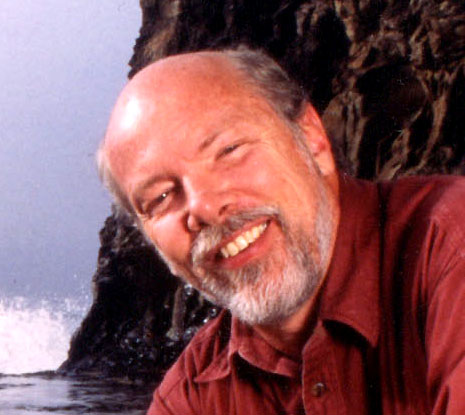 UCSC Emeriti Lecture, Nov 13, 2008
UCSC Emeriti Lecture, Nov 13, 2008
Music Recital Hall, UCSC, 7pm
"What is Life? What was Life? What will Life Be?"
David Deamer,
Department of Chemistry and Biochemistry, UC Santa Cruz
In 1944,
the physicist and Nobelist Erwin Schrödinger published a book with the title
"What is Life?" Schrödinger stated on the first page of his book that
he would address a fundamental question: "How can the events in space and
time which take place within the spatial boundary of a living organism be accounted
for by physics and chemistry?” That remains an open question more than sixty
years later, but we have learned so much more about the history of life on the
Earth that we can ask a related question: “What was Life?” Because several
research groups are attempting to fabricate synthetic life in the laboratory,
we can also ask “What will Life be?”
As
scientists addressed these questions over the past decade, a remarkable
connection began to emerge between our understanding of life on the Earth and
the stellar processes that give rise to solar systems with habitable planets.
In order to support research on this connection, NASA
decided to initiate a new scientific program called astrobiology. One of the
goals of astrobiology is to discover how life originated on our planet and
whether it exists beyond the Earth. To get some idea of the scope of this
question, consider for a moment what a planetary surface in our solar system
was like four billion years ago, before life began. The surfaces of the Earth
and Mars were hot, mostly covered by salty oceans containing a dilute solution
of thousands of organic compounds. Volcanic land masses emerged from boiling
seas, and tidal wet-dry cycles occurred daily where sea met land. Water
continuously evaporated from the interface between sea and atmosphere,
condensed as rain and fell on the volcanic islands where it formed small pools
containing organic solutes. From this unpromising chaos of land, sea and
atmosphere, the first life somehow emerged, certainly on the Earth, perhaps on
Mars.
My research associates and I have been studying self-assembly
processes in natural geothermal environments and related laboratory simulations
that simulate what the Earth was like before life began. We can be reasonably
confident that liquid water was required, together with a source of organic
compounds and energy to drive polymerization reactions. The clue that we are
following is that certain molecules have properties that allow them to assemble
into more complex structures, a familiar example being the way that soap
molecules can self-assemble into the spherical structures we call soap bubbles.
The same chemical and physical properties allow lipid molecules to assemble
into the membranous compartments of living cells. In earlier work we observed
that macromolecules such as nucleic acids and proteins are readily encapsulated
in membranous boundaries during wet-dry cycles such as those that would occur
at the edges of geothermal springs or tide pools. The resulting structures are
referred to as protocells, in that they exhibit certain properties of living
cells and are models of the kinds of encapsulated macromolecular systems that
would have led toward the first forms of cellular life. In my talk, I will show
how self-assembly of certain molecules in membranous compartments was likely to
be involved in the origin of life. I will also describe recent progress we and
others have made toward fabricating synthetic cells in the laboratory.
About Professor Deamer
David W. Deamer is a Research
Professor in the Department of Biomolecular Engineering and Department of
Chemistry and Biochemistry at the University of California, Santa Cruz. His
undergraduate degree was in Chemistry, at Duke University, Durham NC, and his
Ph.D. in Physiological Chemistry from the Ohio State University School of
Medicine. Following post-doctoral research at UC Berkeley, he joined the
faculty at UC Davis in 1967, then moved his laboratory to UC Santa Cruz in
1994.
Prof. Deamer's research interest is how cellular life arose on the
Earth nearly four billion years ago. He has investigated meteorites that
contain organic carbon compounds, and demonstrated self-assembly of complex
lipid-protein structures that exhibit some of the properties of life. Prof.
Deamer is in the process of writing a book on the origin of life that will be
published by UC Press.
A second research area concerns DNA transport through nanoscopic pores in membranes. This work focuses on developing an instrument that can analyze nucleic acids as individual molecules.